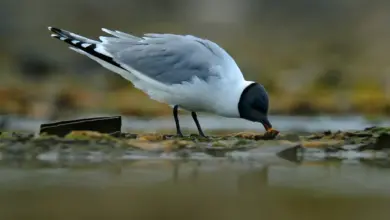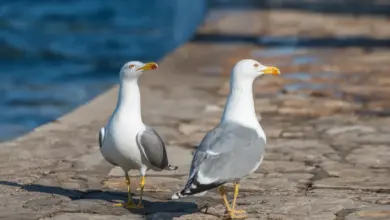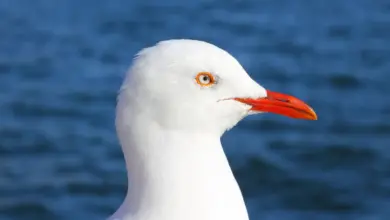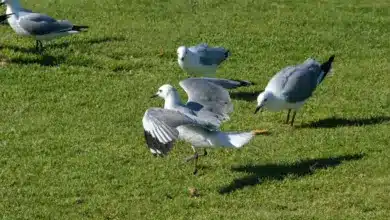Swallow-tailed Gull (Creagrus furcatus)
The Swallow-tailed Gulls (Creagrus furcatus) are South American seabirds that have the distinction of being the only fully nocturnal (night active / feeding) gull species in the world.
They spend most of their lives flying and hunting over the open oceans. They have large eyes that are specifically adapted for their night-hunting activities.
Distribution / Habitat
These pelagic birds (or oceanic birds) live on the open ocean and only return to the land for the breeding season.
The main breeding location is in the Galápagos Islands (off the coast of Ecuador), where they nest on all major and several minor islands – particularly along the rocky shores and cliffs of Hood, Tower, and Wolf Islands, where the water tends to be warmer.
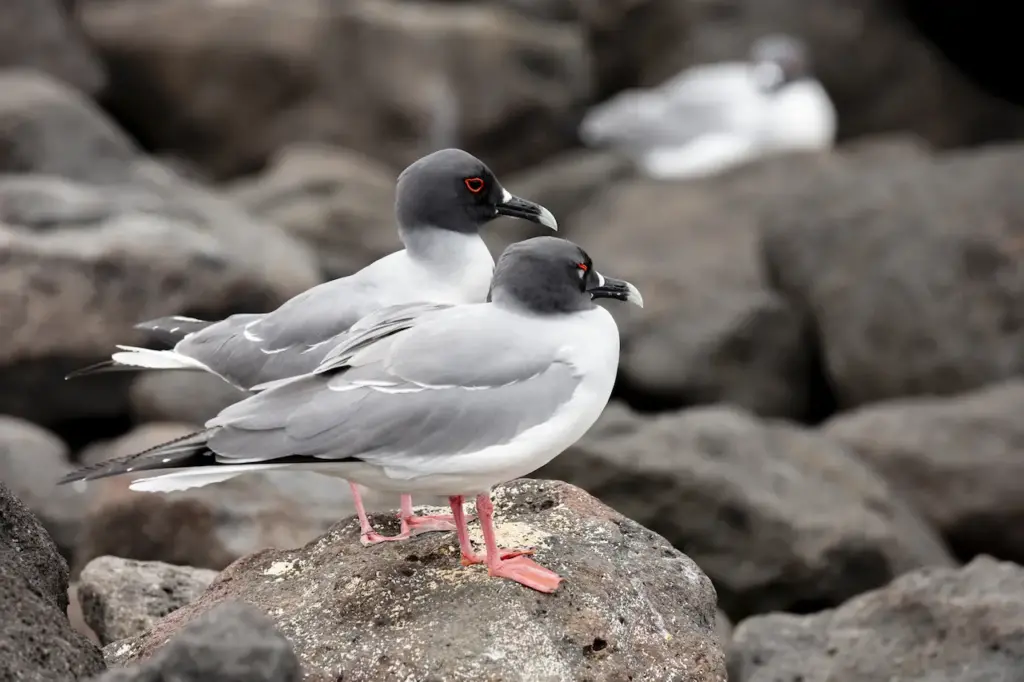
To a lesser extent, they breed on Malpelo Island off the coast of Colombia
They spend the winters traveling along the coast of South America – from central Colombia south to central Chile.
Description
The breeding adult has a black head, with bright red fleshy rims around the eyes; the back is grey, the upper chest is greyish; and the wingtips are black.
The non-breeding bird has a white head and black eye rings.
Males and females look alike.
Diet / Feeding
Their diet mostly consists of squid and small fish (such as clupeid fish) that rise to the surface at night to feed on plankton.
Breeding / Nesting
Swallow-tailed Gulls are of reproductive age when they are about 5 years old. Pairs typically remain together.
They join mixed, loose breeding colonies with large distances between their platform nests. At times, they also nest separated from other gulls on steep slopes or broken cliffs.
A clutch typically only consists of one single, speckled egg. When breeding, both the male and the female share the brooding duties during the day – and both remain at the nest. During the night, the non-brooding parent will go out to sea to feed.
The incubation period is about 31 – 34 days. Both parents feed the chicks. The young leave the nest when they are 60 – 70 days old. The adults continue to feed them for another month or so after fledging.
Calls / Vocalizations / Sounds
Their calls are quite unlike those of most other gull species. Their vocalizations mostly resemble those of the Black-legged Kittiwakes and Sabine’s Gulls.
Their alarm (sentinel) call is the loudest and most commonly heard call. It has been described as a “rattle-and-whistle” – gurgling screams that they make while moving the head side to side.
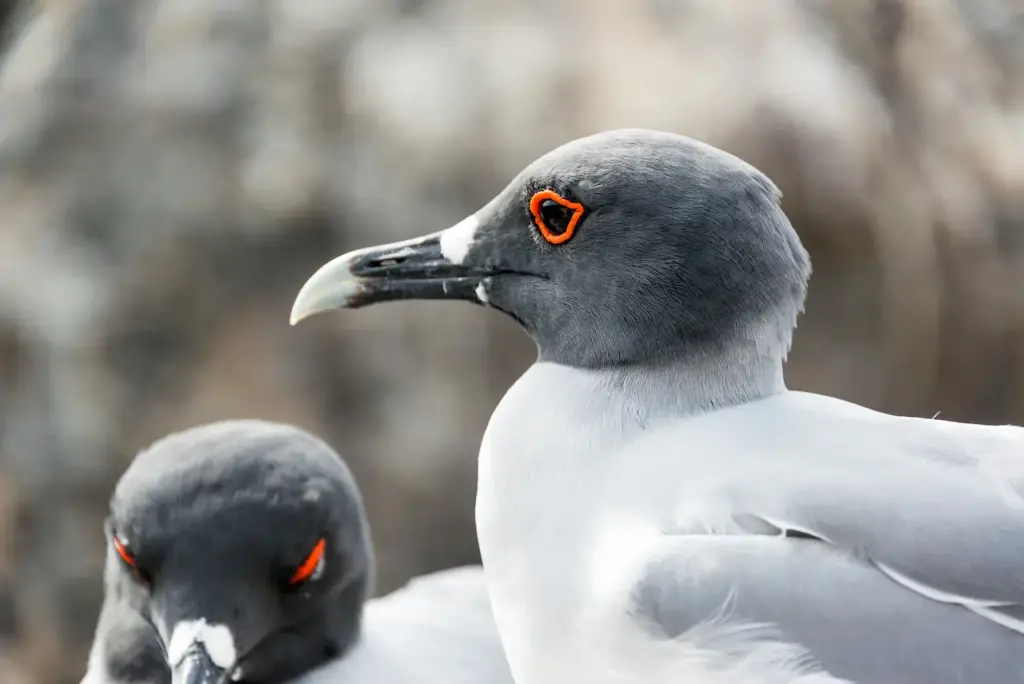
Their contact calls are loud and rapid kweek, kweek, kweek.
https://www.xeno-canto.org/embed.php?XC=135242&simple=1
Alternate (Global) Names
Chinese: ??? … Czech: Racek galapážský … Danish: Svalehalemåge … Dutch: Zwaluwstaartmeeuw … Estonian: öökajakas … Finnish: Yölokki … French: Goéland / Mouette à queue fourchue … German: Gabelschwanzmöwe … Italian: Gabbiano coda di rondine, Gabbiano codadirondine … Japanese: akamekamome … Norwegian: Svalestjertmåke … Polish: mewa widlosterna … Russian: ????????????? ????? … Slovak: ?ajka lastovi?kovitá … Spanish: Gaviota de las Galapagos, Gaviota Rabihorcada, Gaviota Tijereta … Swedish: Svalstjärtad mås


